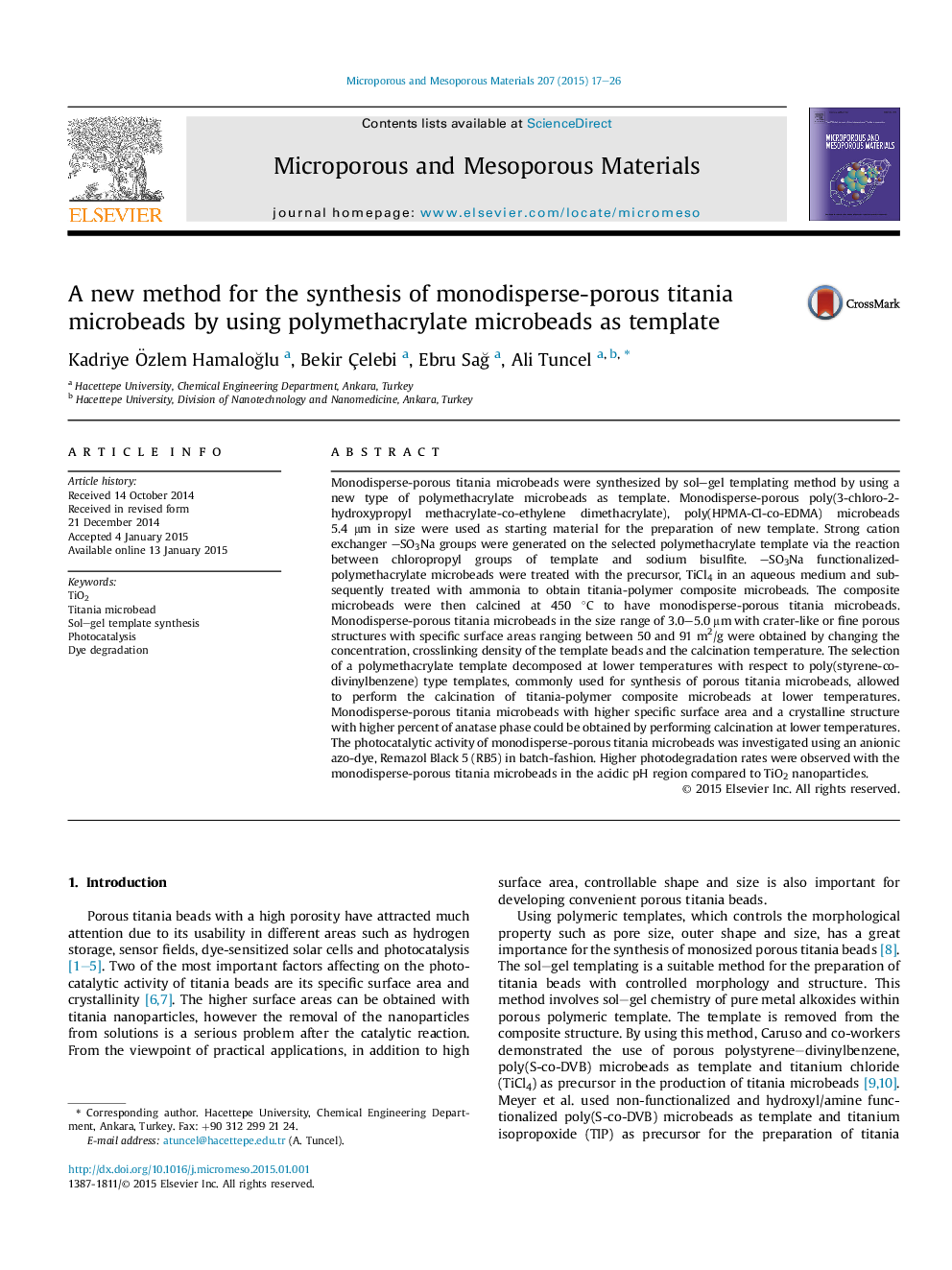| کد مقاله | کد نشریه | سال انتشار | مقاله انگلیسی | نسخه تمام متن |
|---|---|---|---|---|
| 72651 | 49030 | 2015 | 10 صفحه PDF | دانلود رایگان |
• A new sol–gel templating method was proposed for monosized-porous titania microbeads.
• Polymethacrylate template with low degradation temperature was selected.
• Surface area of titania microbeads increased by decreasing calcination temperature.
• Calcination temperature also affected on crystalline structure of titania microbeads.
• The new titania microbeads are suitable for applications in continuous flow mode.
Monodisperse-porous titania microbeads were synthesized by sol–gel templating method by using a new type of polymethacrylate microbeads as template. Monodisperse-porous poly(3-chloro-2-hydroxypropyl methacrylate-co-ethylene dimethacrylate), poly(HPMA-Cl-co-EDMA) microbeads 5.4 μm in size were used as starting material for the preparation of new template. Strong cation exchanger –SO3Na groups were generated on the selected polymethacrylate template via the reaction between chloropropyl groups of template and sodium bisulfite. –SO3Na functionalized-polymethacrylate microbeads were treated with the precursor, TiCl4 in an aqueous medium and subsequently treated with ammonia to obtain titania-polymer composite microbeads. The composite microbeads were then calcined at 450 °C to have monodisperse-porous titania microbeads. Monodisperse-porous titania microbeads in the size range of 3.0–5.0 μm with crater-like or fine porous structures with specific surface areas ranging between 50 and 91 m2/g were obtained by changing the concentration, crosslinking density of the template beads and the calcination temperature. The selection of a polymethacrylate template decomposed at lower temperatures with respect to poly(styrene-co-divinylbenzene) type templates, commonly used for synthesis of porous titania microbeads, allowed to perform the calcination of titania-polymer composite microbeads at lower temperatures. Monodisperse-porous titania microbeads with higher specific surface area and a crystalline structure with higher percent of anatase phase could be obtained by performing calcination at lower temperatures. The photocatalytic activity of monodisperse-porous titania microbeads was investigated using an anionic azo-dye, Remazol Black 5 (RB5) in batch-fashion. Higher photodegradation rates were observed with the monodisperse-porous titania microbeads in the acidic pH region compared to TiO2 nanoparticles.
Figure optionsDownload as PowerPoint slide
Journal: Microporous and Mesoporous Materials - Volume 207, 1 May 2015, Pages 17–26
